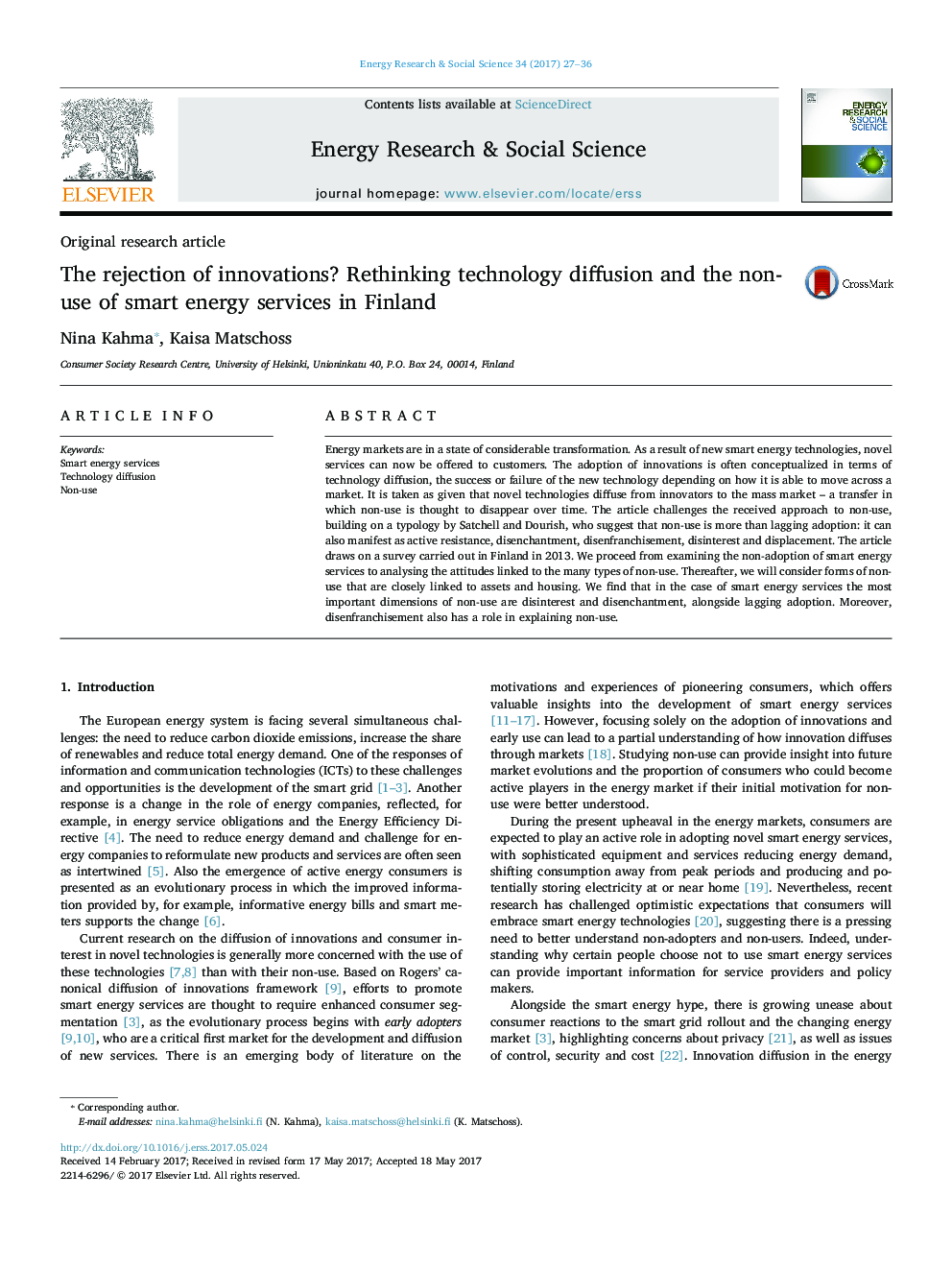| Article ID | Journal | Published Year | Pages | File Type |
|---|---|---|---|---|
| 6463748 | Energy Research & Social Science | 2017 | 10 Pages |
â¢Non-use of smart energy services is relevant from the perspective of markets.â¢Non-use is a multi-dimensional concept that manifests in multiple forms.â¢Non-users are diffuse in terms of attitudes and social background.â¢Disinterest, disenchantment and lagging adoption are central to non-use.
Energy markets are in a state of considerable transformation. As a result of new smart energy technologies, novel services can now be offered to customers. The adoption of innovations is often conceptualized in terms of technology diffusion, the success or failure of the new technology depending on how it is able to move across a market. It is taken as given that novel technologies diffuse from innovators to the mass market - a transfer in which non-use is thought to disappear over time. The article challenges the received approach to non-use, building on a typology by Satchell and Dourish, who suggest that non-use is more than lagging adoption: it can also manifest as active resistance, disenchantment, disenfranchisement, disinterest and displacement. The article draws on a survey carried out in Finland in 2013. We proceed from examining the non-adoption of smart energy services to analysing the attitudes linked to the many types of non-use. Thereafter, we will consider forms of non-use that are closely linked to assets and housing. We find that in the case of smart energy services the most important dimensions of non-use are disinterest and disenchantment, alongside lagging adoption. Moreover, disenfranchisement also has a role in explaining non-use.
